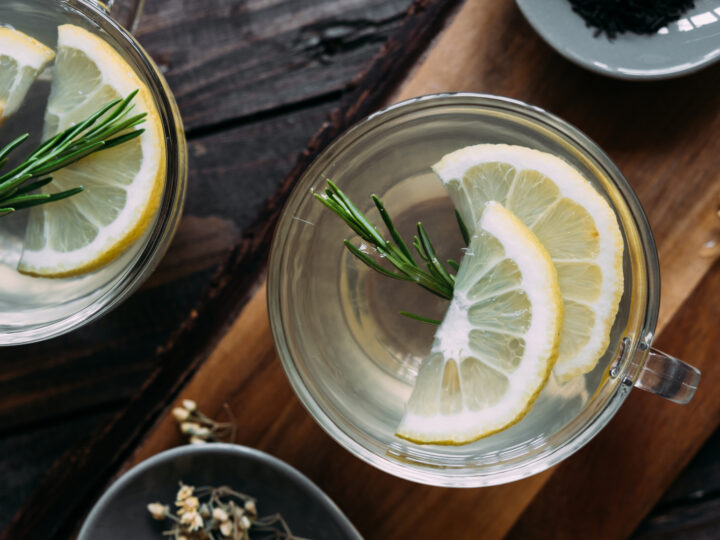WHY YOU SHOULD BE EATING JUJUBE
And Other Medicinal Fruits and Veggies
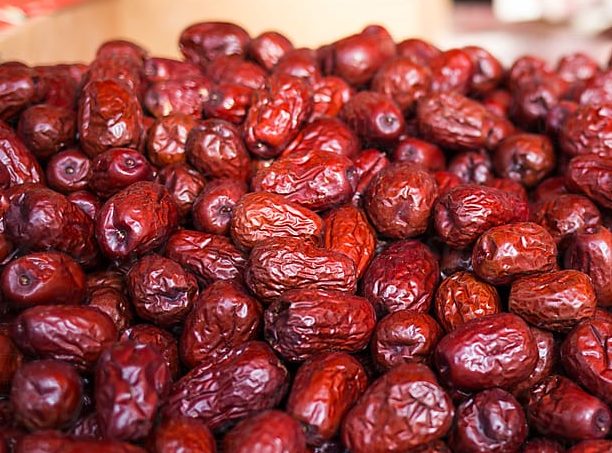
You know the old saying, “An apple a day keeps the doctors away”? According to many believers in Eastern medicine, the old wives’ tale isn’t far off from the truth. In TCM, food is viewed as nature’s medicine and each item fits into the overall energetic and nutritional system. You’ll hear TCM practitioners list which foods are best or worst for any condition you can think of, based on the zang fu organ system, the symptoms a patient is showing, and what they see when they look at you.
Most talk around medicinal vegetation tends to center on herbal treatments like supplements, teas, and tinctures. However, fruits and veggies can pack a significant punch in their own right, too. You might have heard about superfoods like avocado, goji berries, yogurt, or salmon and their long list of benefits. But luckily for us, TCM houses many other fruits and vegetables with medicinal properties such as green onion, cayenne pepper, red dates, and bitter melon.
Green Onion (Cong Bai)
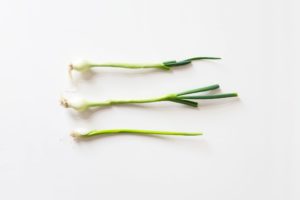 In TCM, certain foods are linked to organ systems as well as the seasons of the year. The Green Onion is said to be deeply connected to the Liver and Gallbladder organ system along with spring. Spring foods are said to be green, pungent, or sour, so like its name, this green onion fits the bill.
In TCM, certain foods are linked to organ systems as well as the seasons of the year. The Green Onion is said to be deeply connected to the Liver and Gallbladder organ system along with spring. Spring foods are said to be green, pungent, or sour, so like its name, this green onion fits the bill.
The green onion is special in that is offers benefits to other organ systems as well. In TCM, it’s believed that the white end of the green onion is said to benefit the health of the Lung while the green tops are said to nourish the Liver. Since ancient times, green onions have been used as a means of getting rid of pathogens, and more specifically to help cure colds, flus, measles, or abscesses. These days, a TCM practitioner might prescribe you add more green onion to your diet to activate yang, or relieve internal heat or fever.
Want to grow your own green onions at home? This medicinal plant is very easy to regenerate from the leftovers of last night’s dinner. Simply put the green onion scraps in a cup and fill just enough to cover them. Make sure the roots are pointed down, change out the water every few days, and make sure the onions get some sunlight each day. You can eat green onion raw, dried, or cooked. It’s an easy addition to soups, rice dishes, or make green onion pancakes or breads.
Cayenne Pepper

Did you know that this pepper is useful for more than just a colorful decoration for spicy dishes? Cayenne pepper packs quite the nutritional punch! This pepper has vitamins C, E, and B6 as well as potassium, manganese, and flavonoids. An herb that carries a lot of “yang”, it’s designed to wake up the meridians, improve digestion issues and warm the Stomach in TCM.
Cayenne pepper can also be used to make topical creams that help provide temporary relief for several issues such as back pain, headaches, arthritis, psoriasis, and shingles. When consumed, cayenne pepper has been shown to support cardiovascular health, aid in weight loss, help clear sinuses during a cold, and more. The best way to use cayenne pepper is by drying and grinding it into a powder to use in topical creams, turning it into pill capsules, or incorporating it into your meals if you like the added flavor.
For the best results when attempting to grow cayenne pepper in your home, be sure to time your planting around the end of the frost. A few weeks before, or right as the icy season is ending is most ideal. Cayenne peppers can be quite fragile and don’t respond well to extreme temperatures in either direction. You’ll definitely want to keep the plant indoors for about six to eight weeks until they’ve had a chance to sprout. Be sure that your cayenne peppers live in medium soil and have plenty of sunlight. The first peppers should appear within three to four months.
Bitter Melon (Fu Gua)
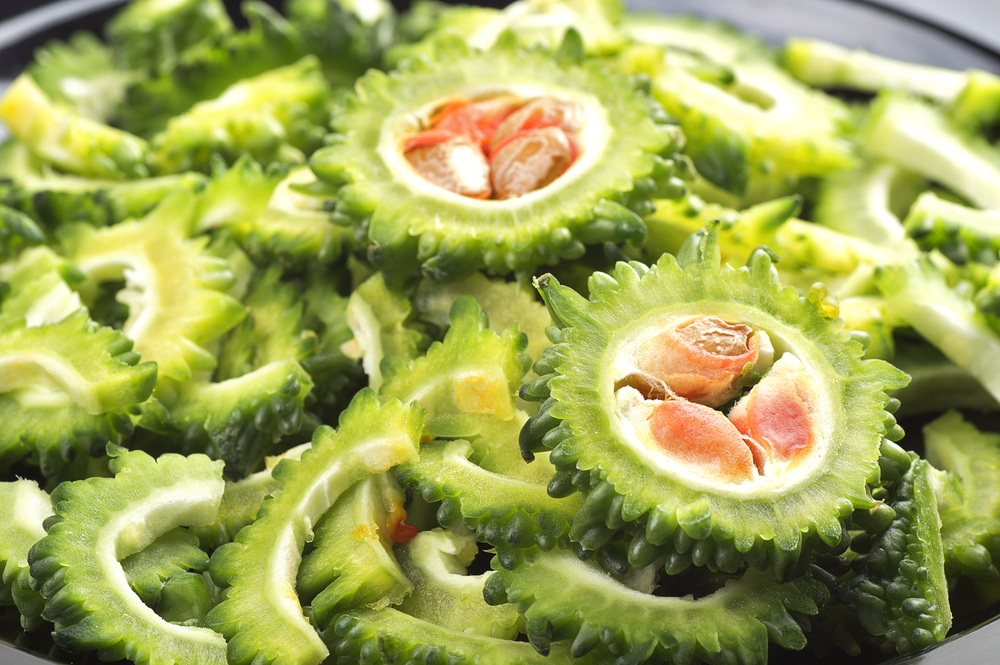 Like the name might suggest, this plant has a strong, unusual flavor that may take some getting used to. It also has a distinct look, something like a bumpy, warped cucumber or gourd. Despite its outer oddities, bitter melon has a ton of vitamins and nutrients to help keep you healthy. You’ll get a solid dose of potassium, calcium, beta carotene, and vitamins C, B1, B2, and B3.
Like the name might suggest, this plant has a strong, unusual flavor that may take some getting used to. It also has a distinct look, something like a bumpy, warped cucumber or gourd. Despite its outer oddities, bitter melon has a ton of vitamins and nutrients to help keep you healthy. You’ll get a solid dose of potassium, calcium, beta carotene, and vitamins C, B1, B2, and B3.
Your TCM practitioner might suggest adding bitter melon to your diet if you’re looking to lower your blood sugar, or clear heat from the Liver or Stomach. However, it’s good to note that people who are hypoglycemic, pregnant or nursing should not each bitter melon. Bitter melon is most often cooked and eaten with meals or juiced and consumed as a tincture for a stronger dose. Common Southeast Asian meals involving bitter melon include it being stuffed with meats like pork or shrimp, currying or pickling the fruit, or adding it to soups.
Bitter melon grows best with at least six hours per day of sunlight and consistent, even watering. One of the tricky things about bitter melon is that it’s reliant on warm or hot weather to remain healthy. This plant is ideal if you live in a place with a long warm season, but you may want to try a different plant if your home has long winters.
Bitter melon is a vine plant, meaning that it will be easiest to grow along a trellis if possible. After planting your bitter melon seeds, you should expect to see fruit appear in 3 or 4 months. Be sure to use the fruit before it turns yellow, though. Your bitter melons are best to use when they’re green and ripe.
Red Dates (Da Zao)
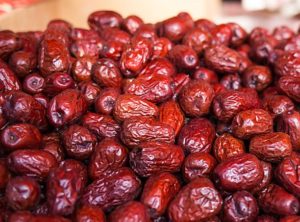
This little red fruit is said to be one of the newest superfoods on the rise, and for good reason. Red dates, also known as jujube fruit, are similar in size and shape to classic Middle Eastern dates. However, these little guys actually contain way more antioxidants and vitamin C– some say up to 32 times more, in fact. They also contain 18 different amino acids.
In TCM, jujube berries are said to be very good at balancing and nourishing both the blood and qi. They are also considered an adaptogen, which means that they are built to help the body better deal with stress. This helps reduce feelings of insomnia, anxiety, and depression. They’re also used in TCM as a quick boost of energy, a way to settle the stomach, or to help speed up recovery from colds and flus. Jujube berries can be eaten raw as a snack, used in baked goods, or added to cereals, oatmeal, and smoothies.
If you want to grow your own jujube fruits at home, it’s most ideal if you have a garden area, as these fruits grow on trees that can become fairly large. Red dates are hearty and can survive many types of weather, but grow best in dry, warm climates. They’ll need plenty of full sun and sandy soil that drains well. These plants are known for being exceptional at surviving droughts, but you’ll want to water yours a few times each week to avoid forcing them to show off that special skill.
What’s your favorite way to use these medicinal fruits and vegetables in your meals? Let us know!
Comments (0)
Leave a reply
You must be logged in to post a comment.


